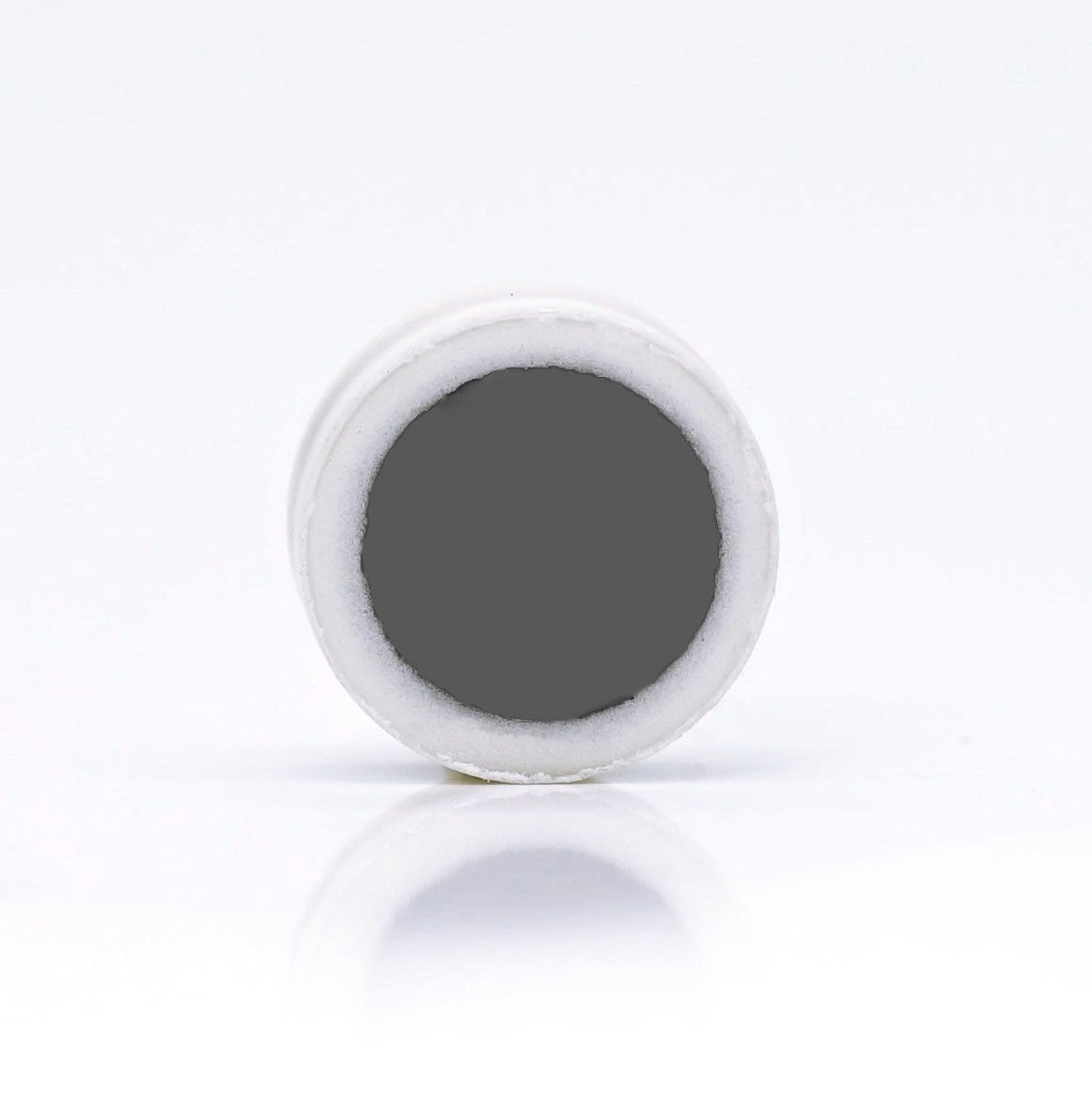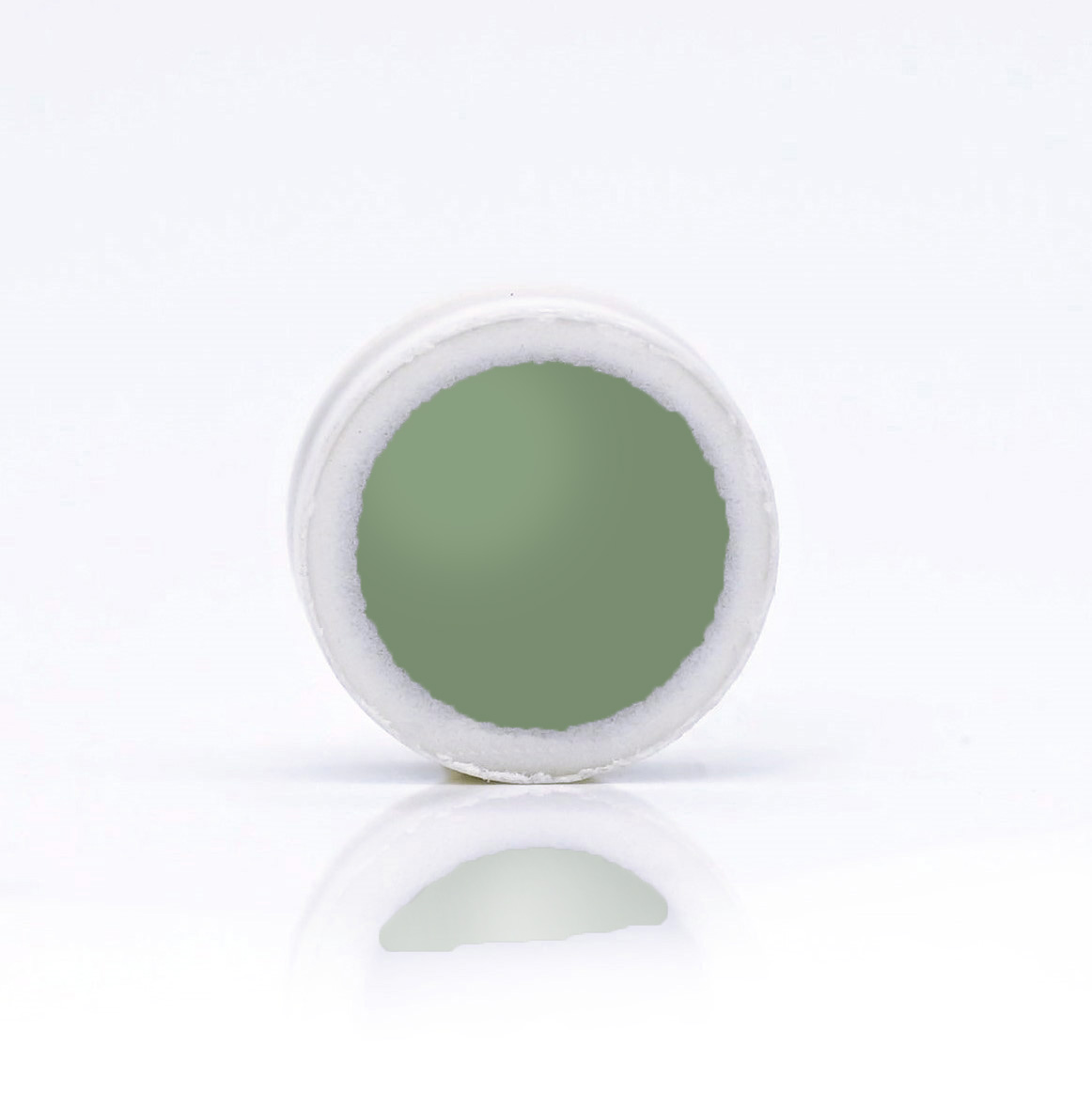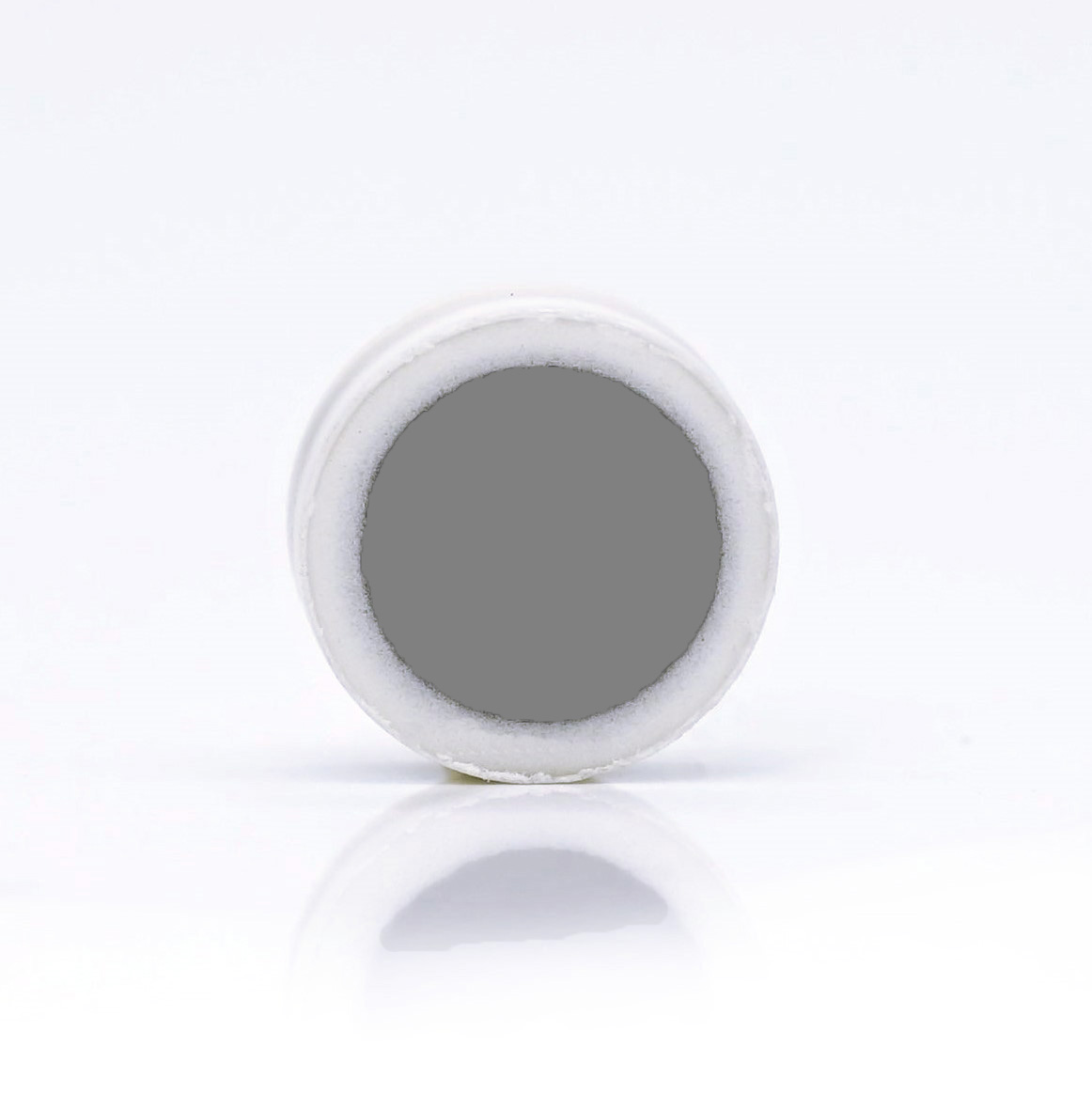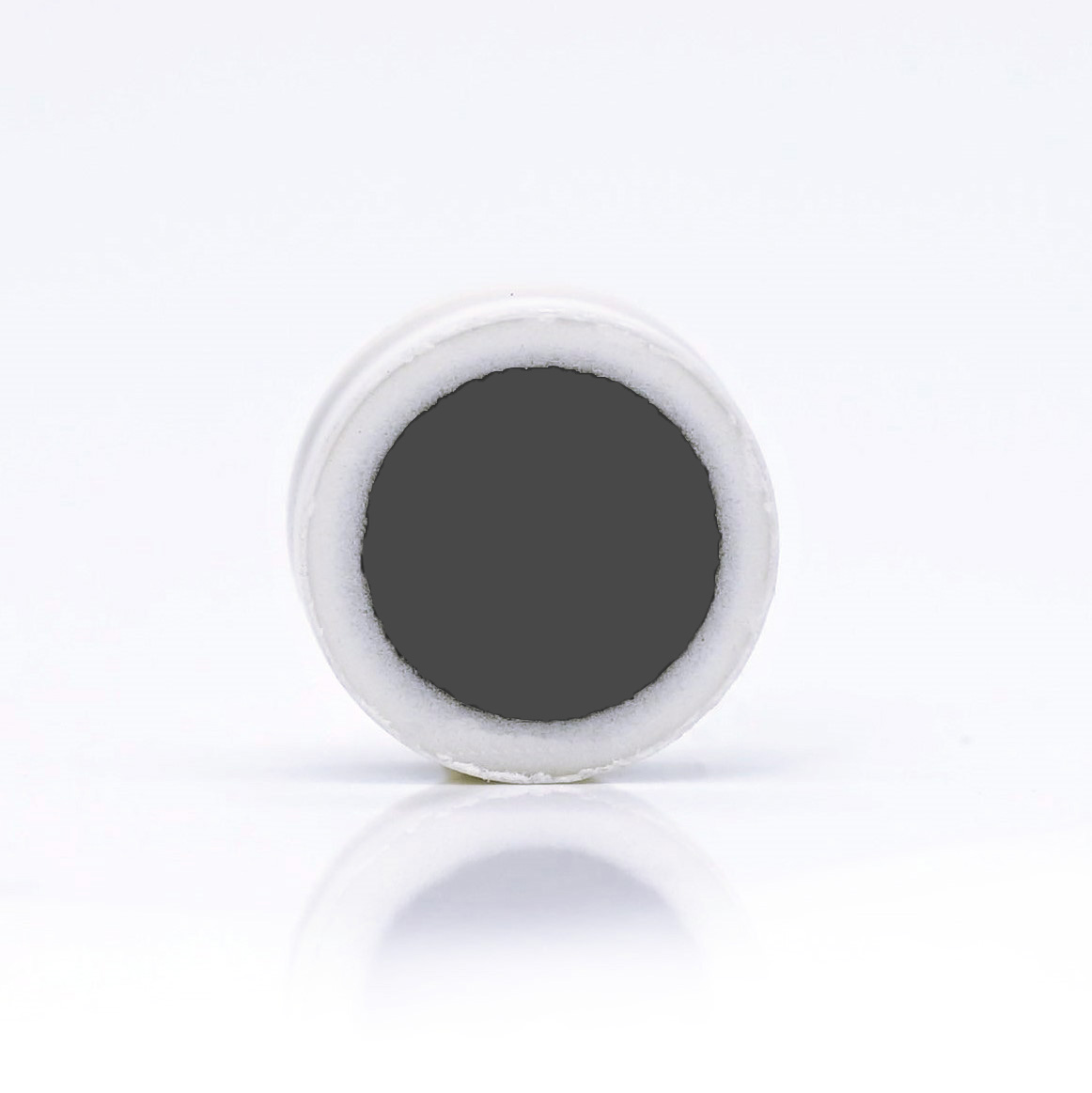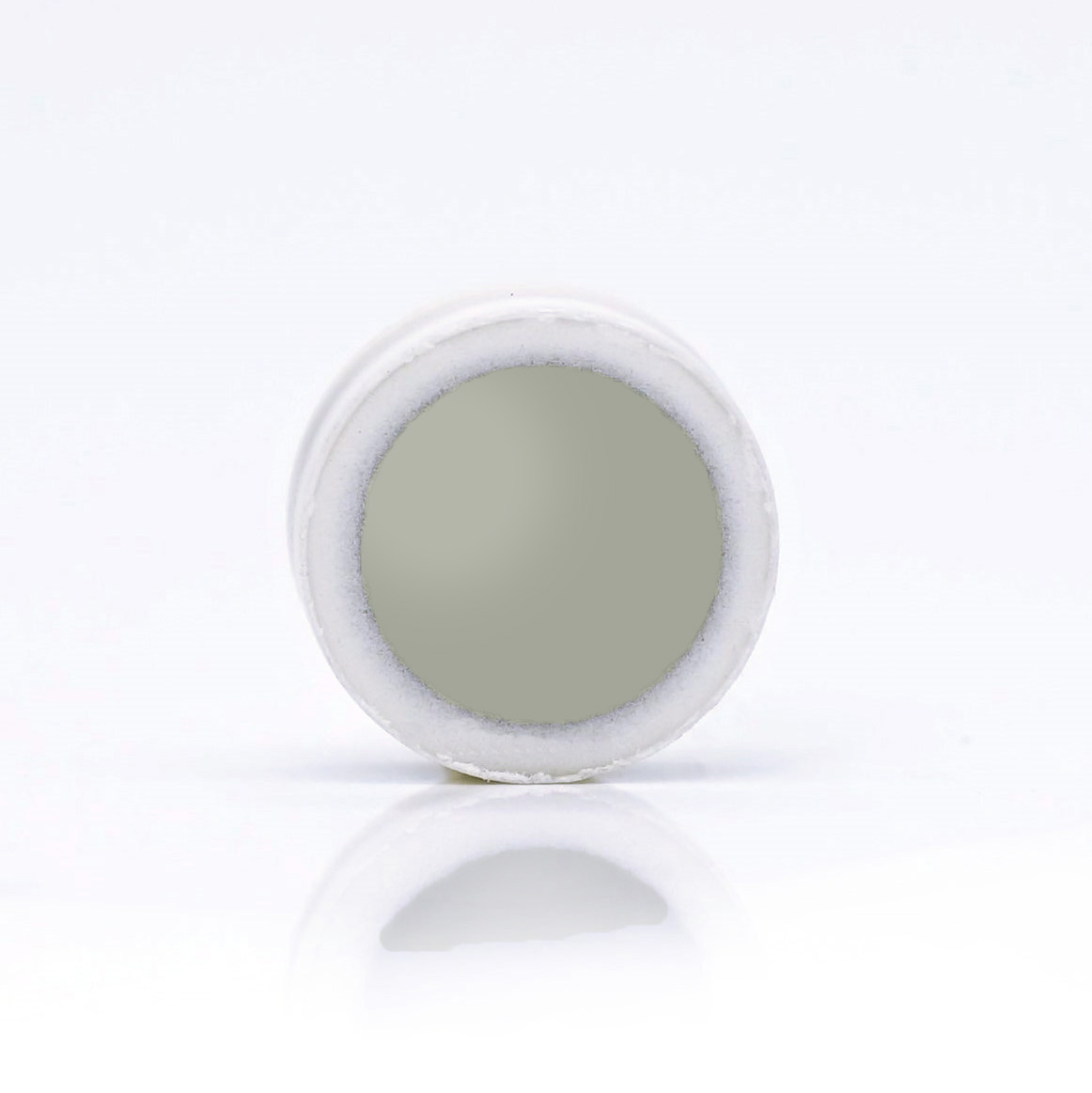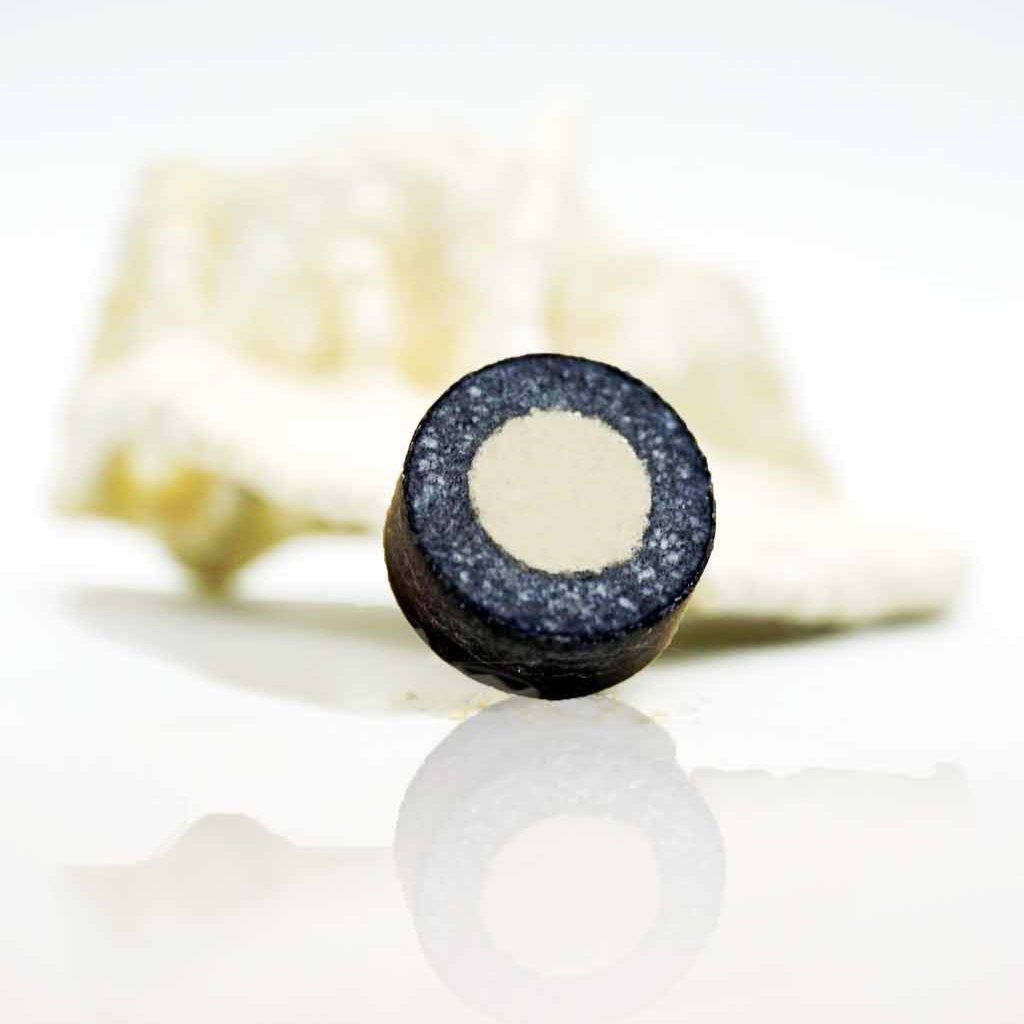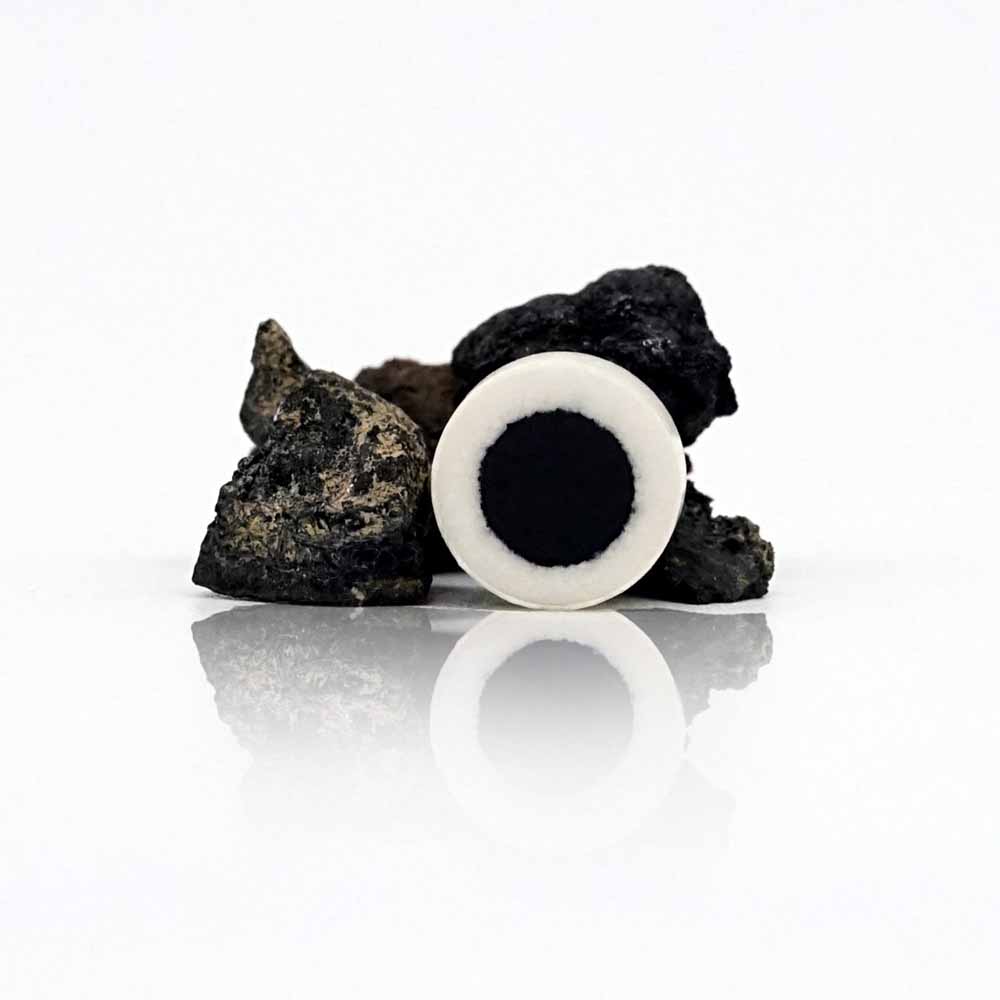The Only Correct Calibration Method – Matrix Matched Nano-Pellets
The matrix being analyzed must be the one used for calibration
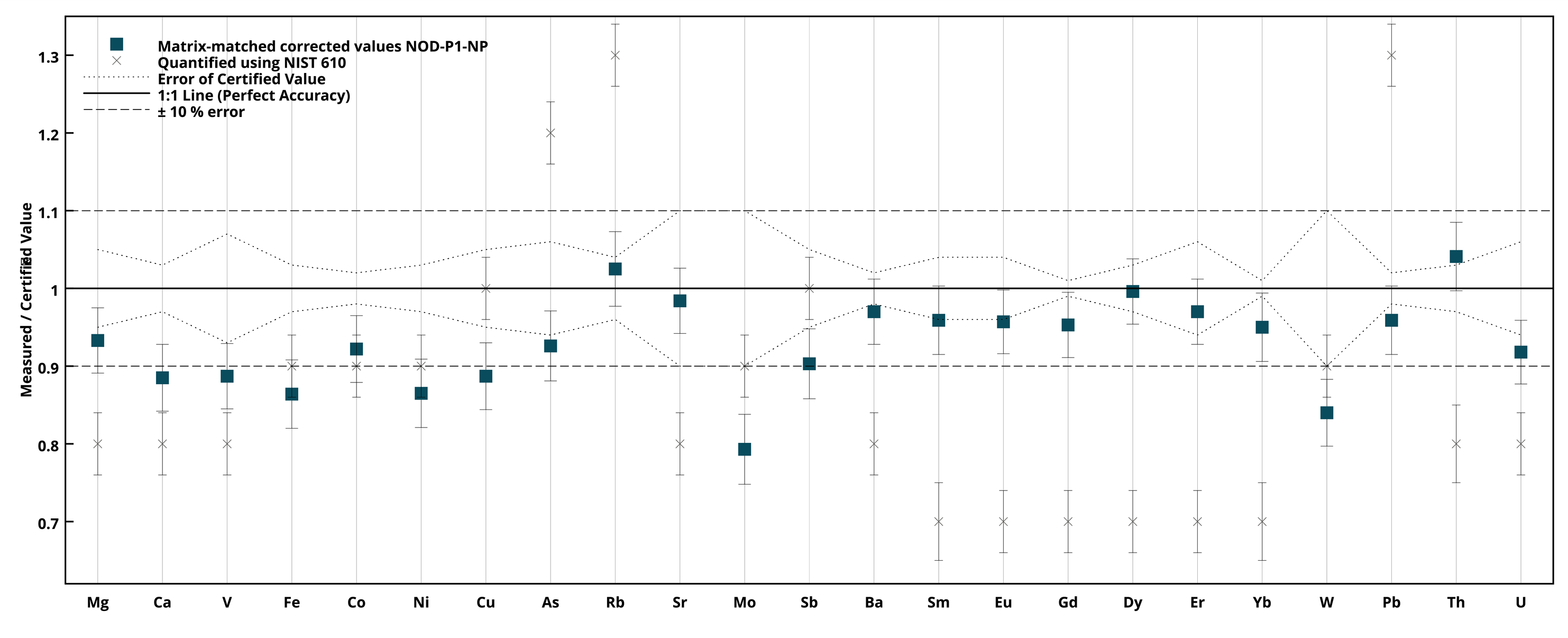
Shown on an example of our manganese nodule refence materials NOD-A1-NP & NOD-P1-NP we are able to show their excellent reproducibility. By calculating correction factors, we are also able to show how much the accuracy improves compared to using NIST 610 and NIST 612 glasses for quantification of manganese nodules. For some elements this improvement goes up to 30 %.
Our own certified reference materials
Natural samples are seldom homogeneous and can rarely be used as reference materials.
Minerals e.g. apatite, magnetite or carbonates e.g. foraminiferes or claws are not available as microanalytical reference materials even though the community is in need of them. So we decided to produce our own certified reference material from buttom-up.
By taking a natural mineral and processing it, we are able to re-homogenise it, making it suitable as an reference material for LA-ICP-MS. This is what we did e.g. with our own certified reference material Apatite-NP:
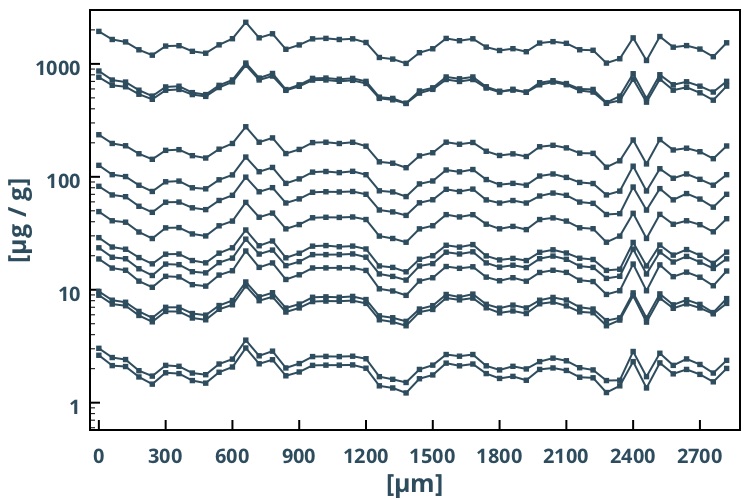
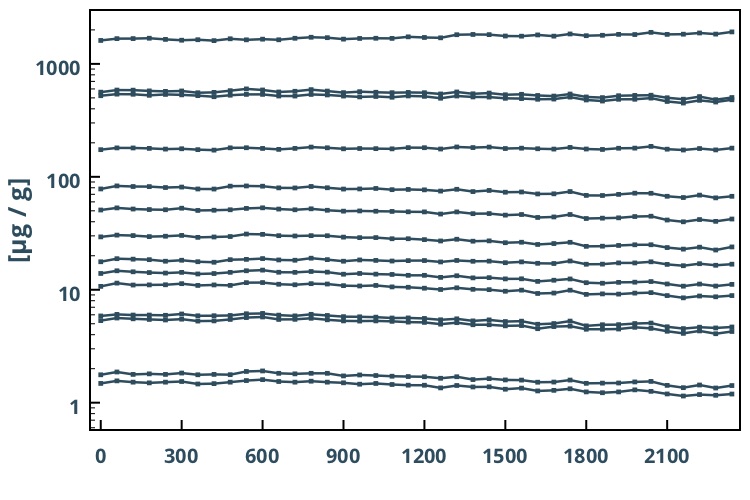
Fig. 2 Line of LA-ICP-MS spot analyses along an apatite nano-pellet showing the homogenised distribution of REE.
The images show a comparison of a line of LA-ICP-MS analyses along a natural crystal (apatite) and a nano-pellet made from the same batch of crystals. The superior homogeneity of the nano-pellet is evident.
Our pellets for LA-ICP-MS applications are available as 10 and 13 mm pellets. If needed with suitable sample holders. The quantitative multi-element analysis calibrated with our Nano-Pellets are applicalbe to a large variety of fields ranging from climate to ore deposit reseach.

